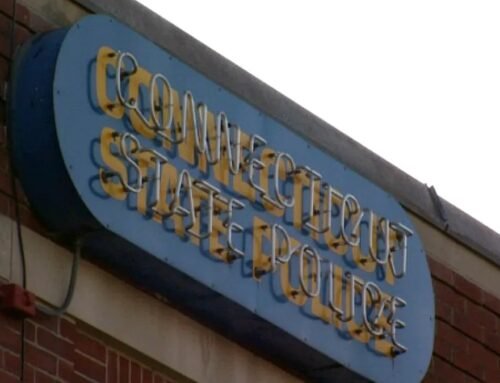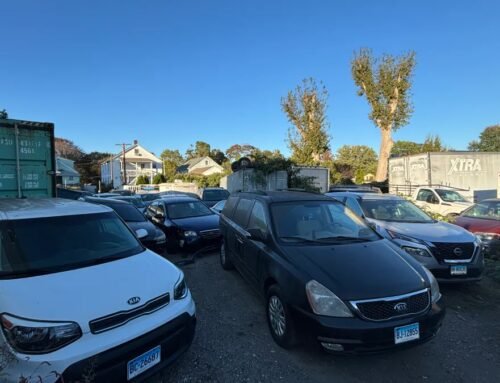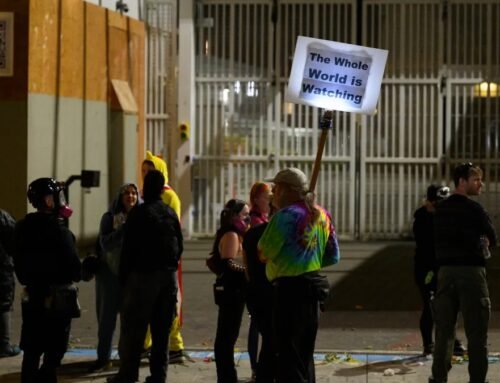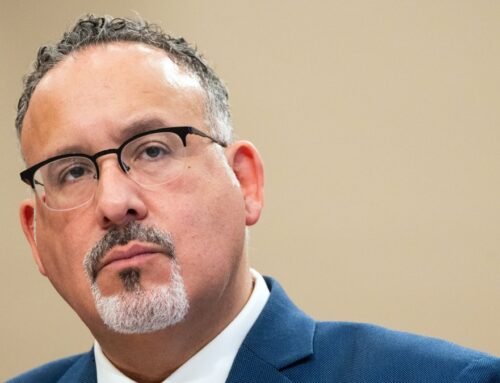Deprecated: Automatic conversion of false to array is deprecated in /home/u164338858/domains/areyoupop.com/public_html/wp-content/plugins/gs-facebook-comments/public/class-wpfc-public.php on line 258

On the one hand, the United States needs thousands of miles of new power lines if we’re going to fight climate change by swapping gas-powered cars and ovens and factories for electric versions. And utilities say stringing lines between power poles is the fastest and cheapest way to grow the grid.
“Above-ground transmission lines are superior to below-ground lines in the vast majority of cases,” said Mark Cloud, a government affairs manager for Southern California Edison. “They’re more cost effective, they’re easier to maintain and they last longer.”
On the other hand, wildfires sparked by above-ground power lines have devastated communities such as Paradise in Northern California and Lahaina in Maui, while Puerto Rico went months without electricity after a hurricane toppled exposed systems there. And the risk of both scenarios keeps increasing as climate change gets worse, which has neighborhood groups and President Joe Biden alike calling for utilities to bury more power lines underground.
“It’s more expensive to do that,” Biden said in an Aug. 31 speech discussing the Maui blaze. “But where possible, we should put them underground. They’re safest.”
The debate over these conflicting realities is raging in California’s Riverside County, where a transmission project planned along the banks of the Santa Ana River is pitting homeowners against business groups, neighboring cities against one another and city leaders against Edison.
State regulators soon may be forced to weigh in.
Norco plans to ask the Public Utilities Commission to force Edison to take the project underground, citing worries over fire risks, views, property values and more.
Edison is fighting that change, insisting that, while the company would make more money by installing pricier underground lines, they don’t believe there are enough benefits to justify the hit to all customers’ utility bills.
How it all shakes out could offer clues about which direction we’re headed, as the race to electrify our warming world heats up.
Powering up or down?
For more than two decades, the Inland Empire’s biggest city has been saying it needs more power.
Riverside now has just one connection to the regional electric grid. City leaders say that makes residents vulnerable to outages and could one day limit both the city’s growth and its transition to electric transportation and buildings. So Edison has spent 12 years developing plans for a second connection, called the Riverside Transmission Reliability Project, which would tie into the grid near the 15 freeway in Jurupa Valley and carry power to Riverside along 9.3 miles of high-voltage wires that would cut a corner of Norco.
The debate is whether those wires should be strung between dozens of new steel poles and four towers that would zigzag along the river bank, soaring up to 180 feet, or if they should instead be tucked inside insulated conduit that’s buried underground.
A third of California’s 220,590 miles of distribution lines already are underground, according to data from the CPUC. The practice has long been common in crowded urban communities and in scenic places, so above-ground equipment won’t pose hazards or detract from aesthetics. And the utilities commission has recommended undergrounding new projects when possible since the 1960s.
But Edison has always maintained that overhead lines are better for the Riverside Transmission Reliability Project, both in terms of reliability for Riverside residents and prices for ratepayers. It’s easier to find and fix problems that arise with above-ground lines, Cloud said, which means outages typically don’t last as long. They also don’t face the same pressures from, say, changes to the water table, which he said is a concern near the Santa Ana River. And they’re significantly cheaper, Cloud said, citing industry figures that it can cost five to 10 times more to take projects underground.
With that context in mind, some residents who spoke during Tuesday night’s Riverside City Council meeting argued that Edison’s plan for above-ground lines is the best way to gear up for the surge in electrification.
“The reality is that we need, in this city, the ability to meet that load that is coming,” resident Chris Porter said. “And this is the most rational, cost-effective and prudent way to deliver that.”
Outages may tend to last a bit longer with underground lines, but others who spoke during Riverside’s meeting noted such outages happen less frequently when lines are buried. Utilities don’t have to cut off power during high wind events when lines are buried, for example. And speakers argued there are just too many risks and drawbacks with continuing to build above-ground systems — particularly in a prized open space area with a history of strong winds and wildfires.
“There is no question about the fact that an underground transmission line is better than overhead. And I speak from over 30 years of experience in the electric business,” said resident Tom Evans, who encouraged the council to do “the right thing” and make Edison bury the lines.
Four miles of the 9.3-mile project already will be underground. Jurupa Valley filed a lawsuit over the project in 2016 that said overhead lines would hurt property values and residents’ views, so the CPUC in 2020 approved a plan for the project that includes burying the four miles of power lines that run through Jurupa Valley’s borders.
Now Norco hopes to file a petition by the end of this month that will ask the utilities commission to make Edison bury the project’s remaining 5.3 miles of power lines, including a couple picturesque miles along its northeastern border.
Fire risk debated
“Look how beautiful this is,” Norco Mayor Pro Tem Kevin Bash said Friday, as he looked out over the Hidden Valley Wildlife Area.
If the Riverside project moves forward as planned, the tree-lined preserve along the Santa Ana River will soon be home to massive steel towers and poles.
Bash recalled a fire that broke out in the riverbed three years ago, triggering evacuations and threatening hundreds of homes. A homeless camp was the suspected cause of that blaze. But Bash said it showed how vulnerable the area is to fire danger, with winds that can reach up to 100 mph.
Area residents also can’t help but think of other recent fires where above-ground power lines have been to blame, Bash said. That includes the Bobcat fire, which burned over 100,000 acres in 2020. The Department of Justice recently sued Edison over that fire, claiming Edison’s contracted tree maintenance company didn’t prevent trees from coming into contact with power lines that caused the blaze.
One in every 10 wildfires that CalFire documented across the state from 2016 to 2020 was triggered by electrical power issues, according to a report last spring by the California State Auditor. And the report says those 1,614 fires were responsible for destroying nearly 20% of the acreage lost in California during those years.
Alex Gerber, whose home butts up against Edison’s project area along the river, was forced to evacuate during the 2020 fire there.
“I could show you video that would scare the pants off you of black smoke rolling behind us in the riverbed,” he said.
Fire crews saved his house then, in part by dropping water and retardant to douse the flames. He worries about how erecting massive steel poles and towers — including a lattice tower that would sit on the hill directly behind his home — might impact aircrews if another fire were to break out there. And Gerber also isn’t looking forward to seeing a steel tower from his backyard each day.
Edison officials counter that fire risks are typically linked to distribution lines, which use smaller wooden poles to carry power to homes and businesses, rather than transmission lines, such as the ones they aim to build for the Riverside project.
Instead of burying lines, Edison spokesman Jeff Monford said crews can make exposed power lines safer by coating bare wires. He said Edison has covered more than 5,000 miles of wire with conductor over the past five years in high-risk fire areas, which he said has reduced fire risks in those places by 85%.
That process costs roughly seven times less than moving lines underground, according to data Edison provided to the CPUC.
“Covered conductor is the effective and cost-efficient approach to wildfire mitigation in most parts of Southern California Edison service territory, including the places where all of this project would be happening,” Monford said. “So there’s not a good argument in favor of undergrounding here from a wildfire mitigation perspective.”
But supporters of underground lines note the risk of those systems igniting fires is virtually nonexistent. And how, they say, can you put a price tag on saving even one life?
Also, when comparing which method is more cost-efficient, undergrounding advocates argue Edison isn’t considering — or providing — the full picture.
Costs tough to pin down
As planned, the Riverside Transmission Reliability Project is projected to cost $521 million.
Edison hasn’t done an analysis on how much more it would cost to bury all of the project’s power lines or how that would impact customer’s electricity bills, Cloud said.
But the price tag jumped $113 million when Jurupa Valley won its fight to get four miles of the project moved underground. That means undergrounding the project is expected to cost roughly $28 million more per mile. So if those figures hold, moving the remaining 5.3 miles of transmission lines underground would add an estimated $150 million to the project’s total price tag, bringing the cost to roughly $671 million.
Since costs are distributed among all Edison ratepayers, Norco Councilman Greg Newton said estimates from their consultant suggest the change might end up costing each ratepayer less than $1 a year. And Riverside Councilman Steve Hemenway, who’s championed moving the project underground, said they have promising leads on federal grant funding that could help cover the added cost so ratepayers don’t feel the hit at all.
Even if cost increases are negligible in this case, Edison officials have expressed concern about what might happen if every community starts demanding power lines get put underground. Statewide, the utility has 12,635 miles of transmission lines and 91,375 miles of distribution lines. Burying all of those lines would cost hundreds of billions of dollars, which would add up to substantial rate increases.
But advocates for undergrounding say just comparing the price to build lines above vs. below ground doesn’t factor in a long list of related costs.
By some estimates, adding overhead power lines lowers nearby property values by 10%. It also makes it harder to sell those properties, which Gerber said some of his neighbors are already considering if this project moves forward.
If above-ground lines do spark a wildfire, utilities are slapped with fines and legal fees that can trickle down to ratepayers. Taxpayers also pick up the tab for firefighting, while insurance rates often go up. Then there are health costs related to smoke pollution.
During the Bobcat fire, the federal government’s lawsuit against Edison says the U.S. Forest Service spent more than $56 million to put out the blaze, which also caused another $65 million in damage to property and natural resources. The Camp fire that destroyed Paradise and killed 86 people five years ago caused $16.5 billion in losses.
Pacific Gas & Electric, which is Edison’s counterpart to the north, filed for bankruptcy after getting hit with $30 billion worth of liabilities from wildfires. Now the utility is in the process of moving 10,000 miles of overhead power lines underground in high fire risk areas.
Edison plans to move 100 miles of power lines in high fire risk areas underground by 2025 and 600 miles by the end of 2028, Monford said.
The Riverside City Council plans to discuss this project again during its Oct. 24 meeting, while Norco aims to file its CPUC petition within the next few weeks.


























